CrossFit may well be one of the most popular workout programs in the world. According to the organization’s website, CrossFit boasts more than 5 million global participants and 14,000 gyms exclusively dedicated to the training methodology. (1) Whether you’re a skeptic or a hardcore athlete, you’ve probably seen at least one CrossFit WOD (that’s workout of the day) and wondered: can I do that?
This question might be more potent if you’re an older adult. If you have a background in gymnastics, powerlifting, rowing, or any other sport, you may be wondering if CrossFit is for you. Even if you haven’t picked up a barbell in a decade (or two!), when your kids, grandkids, or even your friends are diving into the local CrossFit box, you might consider joining them.
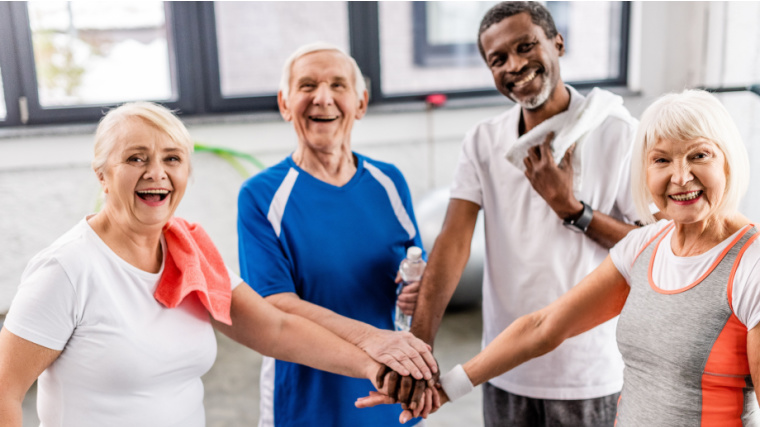
Here’s how you can get started in CrossFit as an older adult, whether you’ve been active lately or not.
Basics of CrossFit
First, a short history lesson to help you break down all the lingo — and figure out what the hype is all about.
CrossFit emerged as a new fitness niche in 1996, drawing inspiration from several other sports, including calisthenics training, gymnastics, and powerlifting. It became an official organization in 2000 when Greg Glassman and Lauren Jenai founded CrossFit Inc. in Seattle and opened the first CrossFit gym in Santa Cruz, California. (2)
As CrossFit evolved into a specific training style, Glassman and his trainers narrowed their focus on 10 physical skills — cardiovascular/respiratory endurance, stamina, strength, flexibility, power, coordination, agility, balance, and accuracy. (3) CrossFit athletes must focus on several exercise categories to develop these attributes.
Functional Training
Functional fitness training is the most important aspect of CrossFit. This exercise category focuses on movements you may perform every day and building your strength for common tasks, such as carrying a heavy box or doing household chores. Developing this type of strength is crucial for helping older adults stay physically independent as they age.
Many other exercises fall under the seven functional movement categories, including these secondary exercises you might find in a CrossFit workout or accessory training session:
- Push: Standard push-up, incline push-up, decline push-up, handstand push-up, diamond push-up, dips, muscle-up, dumbbell bench press, push press, jerk, wall ball (throw component), sled push
- Pull: Pull-up, chest-to-bar pull-up, bar muscle-up, inverted row, plank row, kettlebell swing, clean, hand-over-hand sled pull, rope climb
- Squat: Air squat, sandbag squat, kettlebell squat, jump squat, pistol squat, Bulgarian split squat, box jump, back squat, front squat, overhead squat, snatch, wall ball (squat component)
- Lunge: Walking lunge, static lunge, side lunge, jump lunge
- Hinge: Deadlift, kettlebell swing, hip thrust, stiff-leg deadlift, Romanian deadlift, hanging leg raise, toes-to-bar, glute bridge, bridge march
- Rotation: Twisting sit-up, Russian twist, landmine rotation, rotational medicine ball throw, sledgehammer slam
Many of these exercises are common in other workout styles, but CrossFit puts even more emphasis on functional movements.
A fully-stacked CrossFit gym needs a wide variety of equipment, from pull-up bar rigs and power racks to a fleet of barbells, dumbbells, and kettlebells. But you’ll notice that many of these CrossFit accessory exercises — at least a few on each movement list — don’t require any equipment at all.
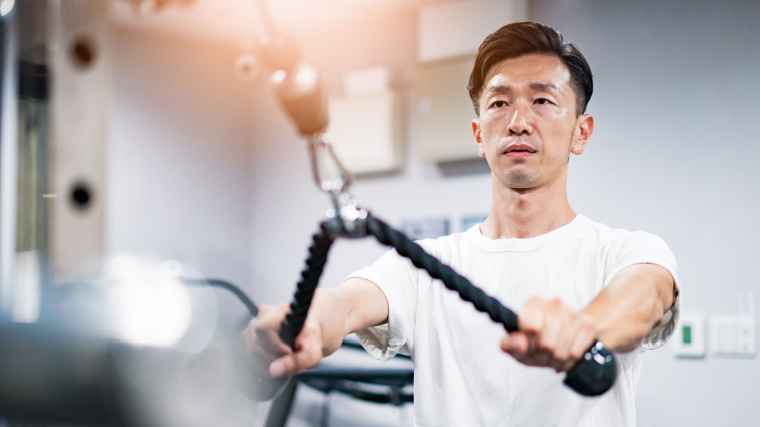
[Read More: How to Do the Lat Pulldown for a Wider Back and Better Pull-Ups]
You don’t need anything but clearance from a doctor and possibly a yoga mat to perform walking lunges, push-ups, air squats, glute marches, and twisting sit-ups.
Especially with the help of a skilled coach, you can modify any of these movements to accommodate whatever range of motion and strength level you can currently achieve and work your way up from there.
In CrossFit, all of these movement types are largely divided into three categories: weightlifting, monostructural movements, and gymnastics.
Weightlifting
The primary weightlifting exercises in CrossFit workouts incorporate multiple functional movements simultaneously, as well as build muscle to further improve functionality. (4) Here are some of the most popular CrossFit barbell exercises:
- Snatch: This Olympic lift combines a squat and push, training the quads, glutes, shoulders, triceps, and upper back.
- Clean & Jerk: The second Olympic lift combines a push, pull, and lunge-esque movement to train the glutes, hamstrings, shoulders, triceps, and upper back.
- Thruster: Thrusters are known as one of the most exhausting exercises. They utilize a deep squat and overhead press to train your quads, glutes, lower back, shoulders, triceps, and core muscles.
- Overhead Squats: This movement is one component of the snatch, and it’s highly effective for training your core and lower and upper body push muscles.
- Front Squat: Front squats are the inverse of traditional back squats, requiring you to rest the barbell on your shoulders instead of your upper back. The unique weight displacement isolates the quads and core more effectively than other squat variations.
- Deadlift: Here, you’ll hinge down to pick up a loaded barbell — often many times in a row. You’ll build tremendous hip, glute, and hamstring strength, as well as the lower back stability you might need to go about your daily life without too many obstacles.
Oftentimes, CrossFit WODs will have you perform any one (or more) of these movements with very high repetitions. Other times, you’ll be asked to find the highest amount of weight you can lift in a given movement.
[Read More: The Best Back Workout for Men, Women, Strength, and More]
Don’t worry if you haven’t worked with a barbell, either ever or in a long time. Most CrossFit gyms will have plenty of PVC pipes available for you to learn the technique and strengthen your muscles to get you ready for weightlifting.
Monostructural Movements
Monostructural movements are the next category of exercises included in CrossFit. They focus on a singular activity for an extended period. Three of the “big” monostructural moves are running, rowing, and cycling — which may take place on a stationary bike, but is just as likely (if not more) to happen on an air bike, where you’ll be pumping arms and legs simultaneously.
Monostructural movements focus on developing your cardiovascular endurance and overall stamina. These are crucial factors for CrossFitters of any age.
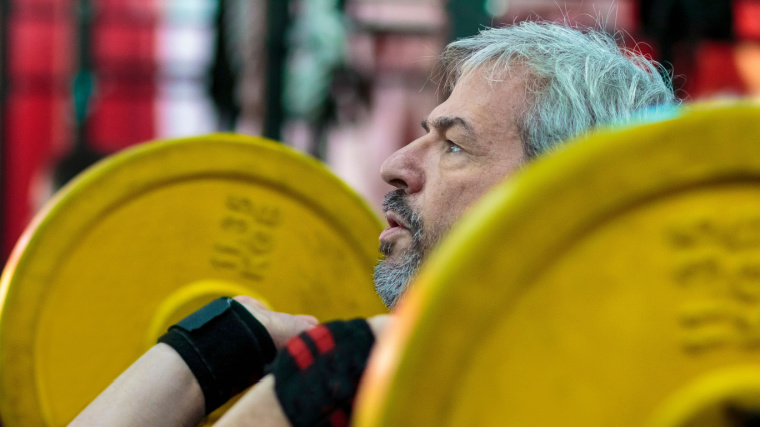
[Read More: The 15 Best Shoulder Exercises For Building Muscle]
Regardless of your age or fitness experience, it can be intimidating to enter a CrossFit gym and encounter superfit individuals going to town on an air bike. But here’s the thing: CrossFit favorites like ski ergs, rowing machines, and air bikes have little-to-no impact on your joints. They’ll help your heart, lungs, and muscles get stronger without banging around on your feet or knees.
Gymnastics
The final category of CrossFit exercises comes from the sport of gymnastics. Many former gymnastics athletes and coaches have taken up CrossFit recently because of the similar training style. (5)
CrossFit places so much emphasis on gymnastics training because it’s extremely effective at developing everything from strength and coordination to flexibility, agility, balance, and accuracy. These are precisely the physical traits that people require to live independently as they age.
[Read More: Get Freakishly Strong With the 5×5 Workout Program]
Gymnastics consists almost entirely of bodyweight exercises, including these popular movements:
- Pull-Up
- Ring Muscle-Up
- Handstand Push-Up
- Handstand Walk
- Rope Climb
- Chest-to-Bar Pull-Up
- Toes-to-Bar
Worried about hopping up onto a rig and being able to hold onto a bar or rope, let alone climb one? Everything can be modified. From band-assisted pull-ups to seated, simulated rope climbs, a properly staffed and equipped CrossFit gym should be able to provide you with customization options to help you access movements.
But customizing your workout doesn’t mean you’ll never be able to hit a rope climb as an older adult. To the contrary. Check out CrossFit Games veteran Joke Dikhoff performing a legless rope climb at age 72:
[Read More: 15 Exercises for CrossFit Beginners to Learn to Build a Strong Base]
How to Start CrossFit as an Older Adult
Before starting your CrossFit journey as an older adult, it’s important to specify what “older adult” means. This term is, of course, relative.
CrossFit separates its athletes into three main age categories for organized competitions. (6)
- Youth: 14-17 years old
- Youth Divisions: 14-15, 16-17
- Open: 18-34 years old
- Masters: 35+ years old
- Master Divisions: 35-39, 40–44, 45–49, 50–54, 55–59, 60–64 and 65+
The CrossFit Games and all qualifying events utilize smaller age groups, often featuring different movement scaling and customizations for different divisions.
You’ll never see a 35-year-old going against a 65-year-old, even though both are considered Masters athletes. Multiple youth divisions are also necessary because of the potentially massive differences in strength and athleticism between 14-year-olds and 17-year-olds.
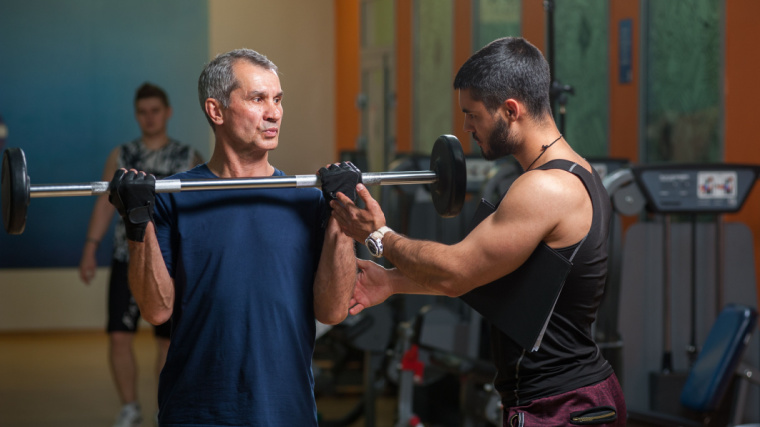
Participation in CrossFit seems to drop off once people get into their late 40s, with 25 to 34 being the primary age range of CrossFitters. (7) With these numbers in mind, 50 years old is a reasonable starting point for the “older adult” category. Here are some general recommendations for people in their 50s, 60s and 70s.
Starting CrossFit in Your 50s
The Office of Disease Prevention and Health Promotion of the U.S. Department of Health and Human Services sets the following guidelines for adults aged 50 and over:
“For substantial health benefits, adults should do at least 150 minutes (2 hours and 30 minutes) to 300 minutes (5 hours) a week of moderate-intensity, or 75 minutes (1 hour and 15 minutes) to 150 minutes (2 hours and 30 minutes) a week of vigorous-intensity aerobic physical activity, or an equivalent combination of moderate- and vigorous-intensity aerobic activity. Preferably, aerobic activity should be spread throughout the week.” (8)
[Read More: The Best Online Workout Programs for Coaching, Cardio, Value, and More]
With clearance from a doctor, you may be able to confidently participate in CrossFit alongside younger athletes. If you’re aiming to take CrossFit classes, consider starting with a single one-hour class with a competent coach. This will fulfill 60 of your 75 recommended minutes of vigorous-intensity activity for a week.
Supplement this training with plenty of walking and swimming to help you recover from the intensity of classes. Once your body acclimates, consider upping the frequency to two classes per week. Continue to scale up gradually from there as desired.
Starting CrossFit in Your 60s
With medical clearance, people in their 60s can also reach a full participation level in CrossFit. As at any age, it’s important to check in with your CrossFit gym’s coach before class so they can help you develop your fundamentals and manage injury risk.
If you’ve been physically active in a different sport, it might be relatively easy — well, as “easy” as CrossFit can get — for you to plug into one or two classes per week. But if you’re entering the gym after a period of relative inactivity, it might benefit you to work one-on-one with an experienced coach so you can establish a baseline level of fitness before diving into class.
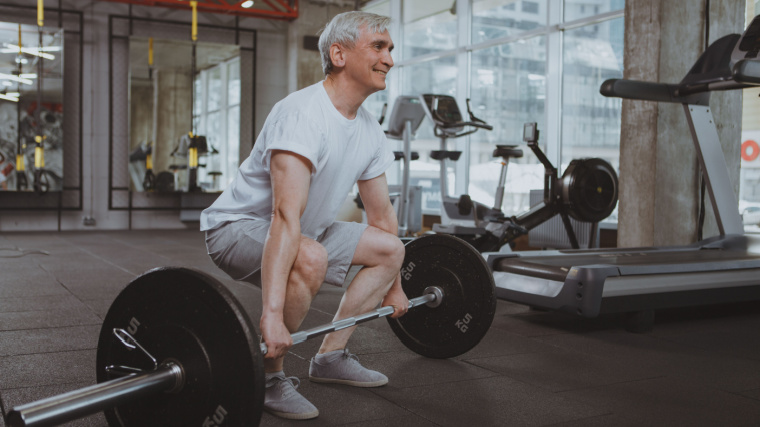
It’s true at any age that staying active outside the gym will help improve your performance in the gym. Along with your developing CrossFit routine, consider low-intensity activities such as yoga, pilates, or swimming. Cooking and gardening will also support a healthy lifestyle and improve workout performance — even if they don’t feel like a workout, they’re certainly active. (9)
Starting CrossFit in Your 70s
CrossFit might seem too intense for people over 70, but that doesn’t have to be the case. There’s a reason that CrossFitters over the 65-year-old mark have an active and competitive division at the Games. Indeed, the oldest person to compete in CrossFit Games thus far is 78-year-old Jacinto Bonilla, who started when he was 67.
Research — and a glance at the 65+ Division of the CrossFit Games each year — suggests that older adults without underlying health problems can tolerate and benefit a great deal from high-intensity interval training. (10) And CrossFit is nothing if not extremely intense. In fact, studies have found that high-intensity training might be an even more effective option for many older adults than traditional endurance training. (10)
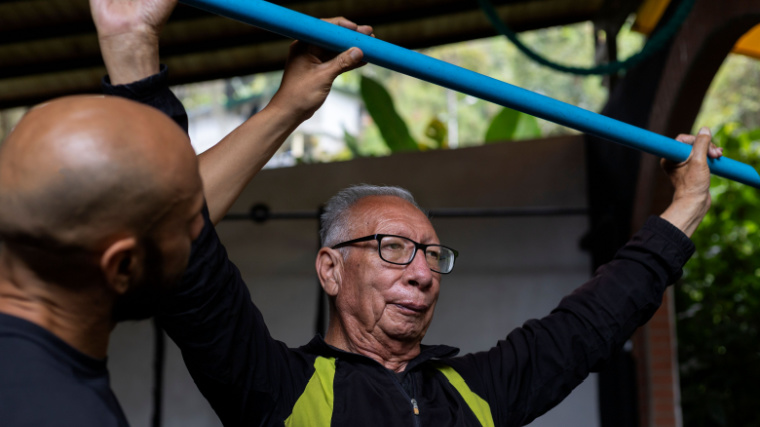
[Read More: 5 At-Home Workouts for Strength, Muscle Growth, Power, and More]
However, adults in this age range still may want to approach CrossFit cautiously. As at any age, athletes will want to get a doctor’s clearance before engaging in specific CrossFit workouts, movements, and intensity levels.
That said, you’ll also need to consider your current fitness level. The transition into CrossFit might look quite different for beginners and novices with prior workout experience, across different age categories. Here are some suggestions for each category.
For Beginners
If you’re a total beginner with no prior experience in any gym setting, you have the advantage of a clean slate. There are no bad habits to unlearn, so you can develop your training fundamentals from scratch. You might also experience muscle growth more quickly early on — especially if you’re eating a sufficient amount of protein — which is known as “newbie gains.” (11)
However, new athletes of all ages may have difficulty keeping up with CrossFit’s intense pace. You may also struggle to understand the “why” of your training program. It can take a long time to see the method behind the madness. Don’t be afraid to ask as many questions as needed of your gym’s coach — including learning about the purpose of each exercise.
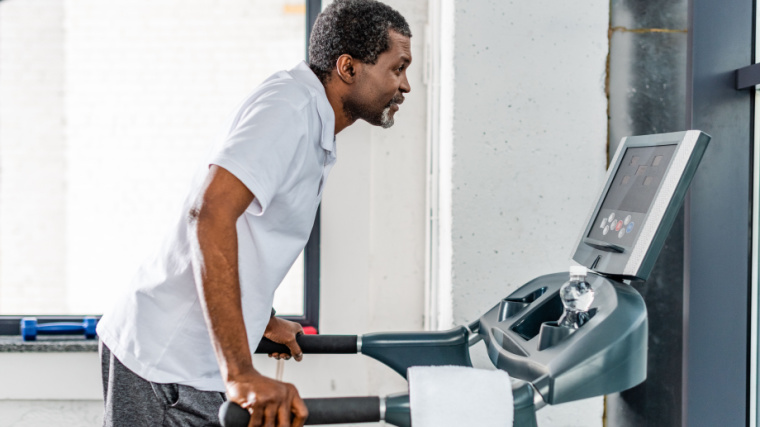
Consider finding out if your CrossFit box has any classes geared toward fellow fresh-faced athletes without a lot of experience. You might find both motivation and comfort in working out alongside others who are learning the fundamentals with you.
For Novices
Older adults who have prior workout experience may have an easier time adjusting to CrossFit’s intense training style, but they might have to cross through another psychological hurdle. People who are used to exercising a certain way may struggle to adapt to a new method. For example, transitioning from powerlifting to CrossFit will be a huge culture shock.
However, you will still have the advantage of a stronger knowledge base. If you’re familiar with weightlifting, you should be able to perform most exercises in your training program without further instruction. Working closely with a coach who is experienced with Masters athletes is still a good idea because they can guide you in the specifics of CrossFit training.
Benefits of CrossFit for Older Adults
CrossFit might not be the conventional workout style for older adults, but it may well be helpful for athletes aiming to add new skills — both mentally and physically — to their repertoire.
Delaying the Aging Process
Exercise has been found to have a protective effect against age-related health problems. Some common examples include arthritis, diabetes, heart disease, and cognitive issues like dementia and Alzheimer’s. (12)
CrossFit is critical here because you’ll be challenging both your body and your mind. The physical challenges are fairly obvious — hefting a barbell above your head is an accomplishment at any age — but the mental hurdles of CrossFit are no less important.
[Read More: What Are Workout Splits and Which Is the Best One?]
You’ll be learning new skills, challenging yourself to improve your full-body coordination, and pushing yourself past what you previously thought you could do. This mental and emotional resilience comes in handy for people of every age but is perhaps extra important for those who may be facing unique challenges associated with aging in this society.
Improving Sleep Quality
Intense exercise — like those featured in CrossFit — can help you fall and stay asleep, accelerating your physical and mental recovery. (13) Getting good rest is critical for helping your body maintain muscle mass, recover from daily efforts, and process everything you need to emotionally and mentally.
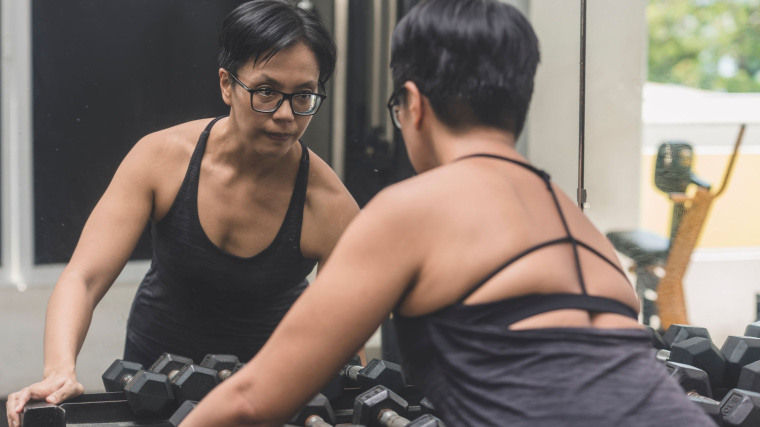
[Read More: The Best Ashwagandha Supplements For Sleep, Testosterone, And More]
Workouts like those done in CrossFit may be able to help you sleep more soundly, which can result in more energy and stamina when you’re awake.
Adapting to Any Schedule
CrossFit is one of the most time-friendly workout styles you can do. Everything is fast-paced, and each workout only takes about an hour — at most. If you’re short on time and have other pressing responsibilities, you can still fit a daily session into your schedule. The intensity and quality of your training are more important than the duration.
Challenges of CrossFit for Older Adults
After you’re medically cleared to participate in CrossFit, the challenges faced by older adults may well resemble the challenges of younger athletes who are new to CrossFit.
Potential Injury
Research suggests that CrossFit injury rates are much lower than one might expect them to be. According to a four-year analysis of more than 3,000 CrossFit athletes, the overall injury rate across all age groups was just .27 per 1,000 hours under a coach’s supervision. (14)
Three hundred sixty-eight of these athletes were over 50 years old and they only had an injury rate of .84 per 1,000 hours. (14)
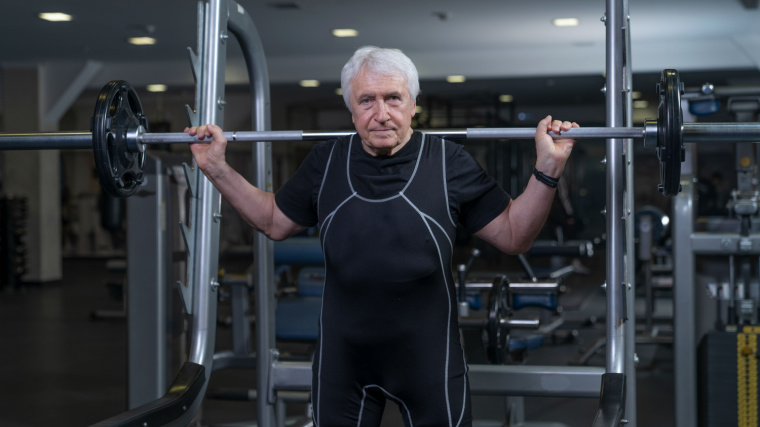
Here are some ways older adults can manage their injury risk during CrossFit:
- Consult with a qualified medical professional and experienced CrossFit coach during every new part of your training journey.
- Don’t be shy about setting your boundaries. Challenging yourself is part of the game, but you know your body better than anyone else — if a movement doesn’t feel right, don’t be afraid to modify it or stop altogether.
- Customize your workout however you need to. Perform fewer reps, use lighter weights, perform seated versions of certain lifts…whatever works for your body. Seeking out and working with a coach with experience with older populations can help tremendously here.
- Perform each exercise with just your body weight, PVC pipes, or light weights until you develop proper form and get comfortable with the movement.
- Focus on getting your whole body involved through weightlifting cues such as breathing properly, bracing your core, and using different foot stances.
- Make sure you’re stretching and cooling down adequately before and after workouts.
- Stay hydrated and well-fed to support your level of physical activity.
Nutritional Requirements
CrossFit is an intense method of training and therefore requires you to get plenty of nutrients to support your efforts. If you’re having more difficulty meeting your caloric needs and getting enough protein, carbs, and fats daily to fuel your workouts, a certified nutritionist or registered dietitian can be a great resource for developing a diet plan that fits your schedule and eating habits.
Cultural Adaptations
Though there are plenty of older adults across the CrossFit ecosystem, you might find yourself in a gym that slants younger than most. You may also have to search harder for a coach who is experienced with working with older athletes.
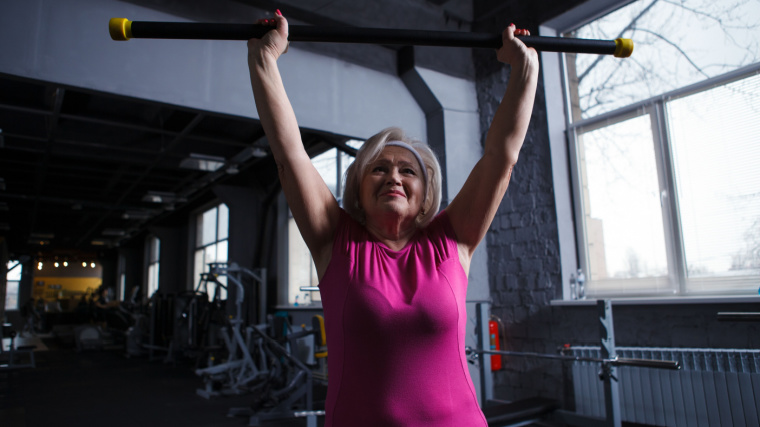
[Read More: How to Do the Overhead Press — Common Mistakes, Variations, and Benefits]
While you’re making these adjustments, you’ll also have to cross a bridge every new CrossFitter encounters — the lingo. You will have to learn CrossFit’s lingo along with the various exercises and equipment, which can be a tough transition — but well worth it when you start to feel in the know.
Start Your CrossFit Journey Today
Trying a new workout style will always be intimidating regardless of your age and previous athletic experience — but adults need new challenges as they get older. If you’re aiming to get into CrossFit as an older adult, you might just find that your local box provides just the right challenge for you.
References
- CrossFit LLC. “Inside The Gym.” CrossFit.
- Wagener, Sebastian, Hoppe, Matthias, Hotfiel, Thielo. CrossFit® – development, benefits and risks. Sports Orthopaedics and Traumatology, vol. 36, no. 3, 4 Sept. 2020; 36(3): 241–249.
- CrossFit LLC. “‘What Is Fitness?’ Part 1: 10 Physical Skills.” CrossFit.
- Bernárdez-Vázquez, R., Raya-González, J., Castillo, D., & Beato, M. “Resistance Training Variables for Optimization of Muscle Hypertrophy: An Umbrella Review.” Frontiers in Sports and Active Living, 4. 2022; 4:949021.
- Tucker, Jeff. “Gymnastics Training Guide – CrossFit.” CrossFit, 2015.
- CrossFit LLC. “About The Games.” CrossFit Games.
- Galic, Bojana. “79 CrossFit Statistics You Should Know in 2023 | Livestrong.” LIVESTRONG.COM, Leaf Group, 19 Aug. 2023.
- Olson, Richard, Piercy, Katrina. “Physical Activity Guidelines for Americans 2nd Edition.” U.S. Department of Health and Human Services, Sept. 2019.
- “Physical Activity Guidelines for Older Adults.” NHS Choices, NHS, 24 Sept. 2021
- Marriott, Catherine, Petrella, Andrea, Marriott, Emily. “High-intensity interval training in older adults: A scoping review.” Sports Medicine – Open, vol. 7, no. 1, 19 July 2021.
- Wernbom, Mathias, Augustsson, Jesper, Thomee, Roland. “The influence of frequency, intensity, volume and mode of strength training on whole muscle cross-sectional area in humans.” Sports Medicine, vol. 37, no. 3, 2007;37(3):225-64.
- Garatachea, Nuria, Pareja-Galeano, Helios, Sanchis-Gomar, Fabian. “Exercise attenuates the major hallmarks of aging.” Rejuvenation Research, vol. 18, no. 1, 1 Feb. 2015; 18(1): 57–89.
- Dolezal, Brett, Neufeld, Eric, Boland, David. “Interrelationship between sleep and exercise: A systematic review.” Advances in Preventive Medicine, vol. 7301676, 26 Mar. 2017, 1364387.
- Feito, Yuri, Burrows, Evanette, Tabb, Loni Phillip. “A 4-year analysis of the incidence of injuries among CrossFit-trained participants.” Orthopaedic Journal of Sports Medicine, vol. 6, no. 10, 24 Oct. 2018; 6(10): 2325967118803100.
Featured Image: LightField Studios / Shutterstock
The post How to Get Into CrossFit as an Older Adult appeared first on BarBend.
